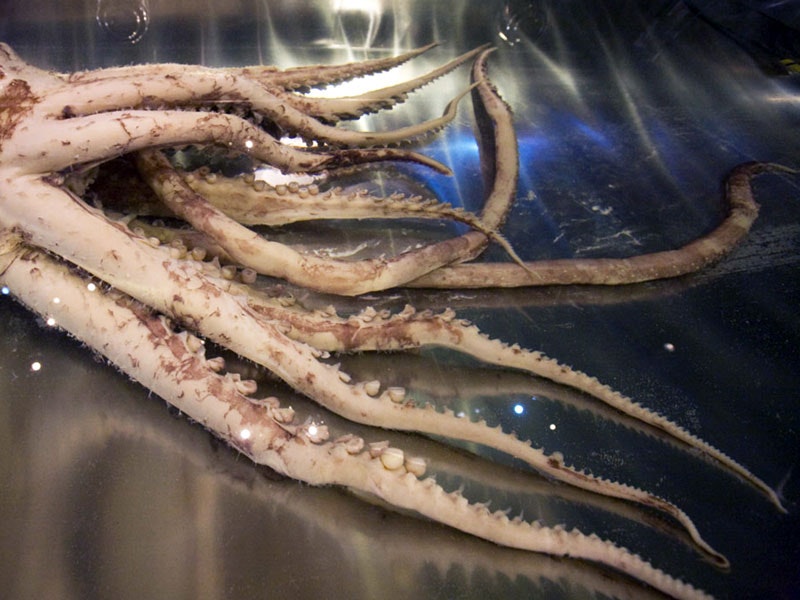
How the colossal squid feeds
The colossal squid is a predator, and it hovers in the dark depths of the ocean looking for prey.
Free museum entry for New Zealanders and people living in New Zealand
Open every day 10am-6pm
(except Christmas Day)
Free museum entry for New Zealanders and people living in New Zealand
We know very little about the colossal squid’s life history, diet, or behaviour, because they live at extreme depths in freezing water. They are also very rarely captured. The first report of a colossal squid was in 1925, when the head and arms were discovered in a sperm whale stomach. Since then, a total of only eight adult colossal squid have been reported, and six of those were remains recovered from the stomachs of caught whales.
Watch: the mysterious world of the colossal squid
Colossal squid live in Antarctic waters, but may come as far north as the southern waters of New Zealand. They live at depths of 1000 metres or more.
Scientists don’t know much about the reproductive cycle of the colossal squid, mainly because only females have been found. The male probably has a fairly large penis to implant sperm directly into the female.
All squid lay eggs. Some lay single eggs, others lay clusters of eggs in a large jelly-like floating mass. Giant squid lay eggs in this way, so colossal squid probably do the same. The eggs hatch out into tiny versions of the adult which become mature adults in one–three years.
Reports of colossal squid have been very few. But these creatures must be more common than the reports suggest.
Whales eat colossal squid, and the squid beaks stay in the whale’s stomach for a long time because they are not easily digested. Scientists have estimated the number of colossal squid from the beaks found in the stomachs of sperm whales in the Southern Ocean. They believe that colossal squid might form as much as 77% of a sperm whale’s diet.
Watch: sperm whale vs giant squid

The colossal squid is a predator, and it hovers in the dark depths of the ocean looking for prey.

Nobody has ever seen a live colossal squid swimming so this is a difficult question to answer. The scientists had to look at how other closely related squid swim and come up with a theory about how the colossal squid moves.

Bioluminescence is light produced by living organisms. It is extremely common in the oceans and occurs in all oceans at all depths.